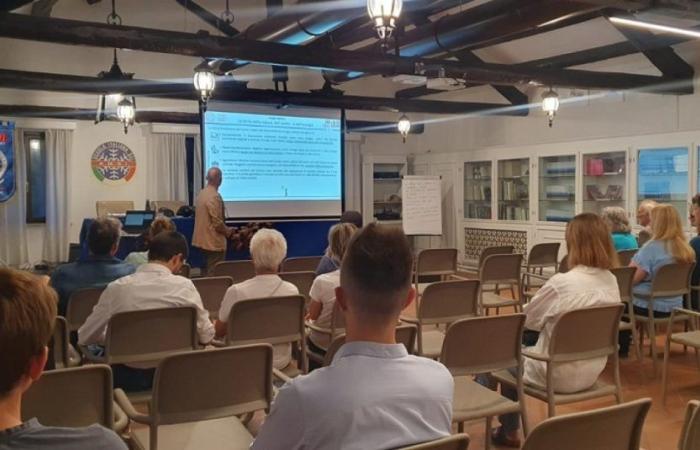
BELLUNO. It took place in recent days in House of Ski Instructorsto Borgo Pra di Bellunothe second conference of the review “Snow words” which since last May has been a fixed event every third Wednesday of the month, excluding August, with the aim of creating moments of reflection and training on topics more or less related to the world of skiing and snow.
“Snow and climate change: what energies for our future?” the title of the conference which featured the professor as speakers Massimo Masi and the engineer Piero Danieli of the University of Padua explain, first in a more technical and then more practical way, what energy is and what use humanity makes of it yesterday and today.
Professor Masi, starting from the premise that today “it is very fashionable to talk about the environment and what should and should not be done and that in the end we must deal with the numbers”, gave an overview of the human being, pointing out that in civilization cave man lived only by hunting and gathering “consuming” little energy and diluted over a long time but going forward over the millennia and centuries, man then dedicated himself to pastoralism, breeding, agriculture, starting to produce more, dedicating himself to other activities, beyond survival, and therefore consuming more energy in increasingly shorter times. The turning point came with the Industrial Revolutionthe moment in which man began to make large-scale use of fossil energy, leading to exponential population growth over the last 200 years and making every individual in industrialized countries increasingly energy-intensive with consequent high CO2 emissions never recorded before.
CO2 itself is said to be responsible for climate change and rising temperatures and looking at the core samples taken to see the concentration of the same in the soil layers, and comparing the concentration with the temperature data, it was seen that the two graphs go hand in hand, confirming the correlation between climate and emissions.
The energy consumed by the population in relation to the planet’s resources is instead calculated by bodies which every year identify theovershoot day which indicates the date in the year in which a country theoretically runs out of resources available for that year. In general today it is estimated that almost as much land would be needed for the lifestyles of the world population.
Having made all these premises, we looked at how the different resources available, with the same weight, give an energy yield and we saw that, for example, for a unit of measurement of MJ per kilo a 0 is extracted from the sun, 2 MJ per kilo while from diesel 42 MJ per kilo and from gas 48 MJ per kilo which means that if you take a car that has to travel 100 kilometres, you will need 5 liters of fuel or 500 square meters of photovoltaic panels to recharge it.
Engineer Danieli thus justified the fact that col photovoltaic it is not possible to create centralized systems but it is necessary to exploit the roofs of houses in a capillary way to make this technology useful even if 90% of the energy that is consumed in general still comes from fossil fuels and photovoltaics will never be able to replace such a percentage high also due to the problem of giving energy peaks in the middle of the day and going to zero in the absence of sun, forcing the addition of storage systems.
From all this comes the reflection that if we want to make an energy transition we must do it by applying ourselves consume less energy rather than looking for diversions on how to produce it by changing their lifestyle with good practices that are apparently insignificant but can make a difference: if we take a hypothetical town of 800 inhabitants and everyone abandons electric scooters every day and moves on foot, they halve their time on social media and entertainment channels and consume tap water instead of bottled water, in a year it would be possible to give energy to another 260 people. The conclusion of the meeting was therefore that a realistic transition combines the development of renewable energy with more conscious living on the part of each individual.





